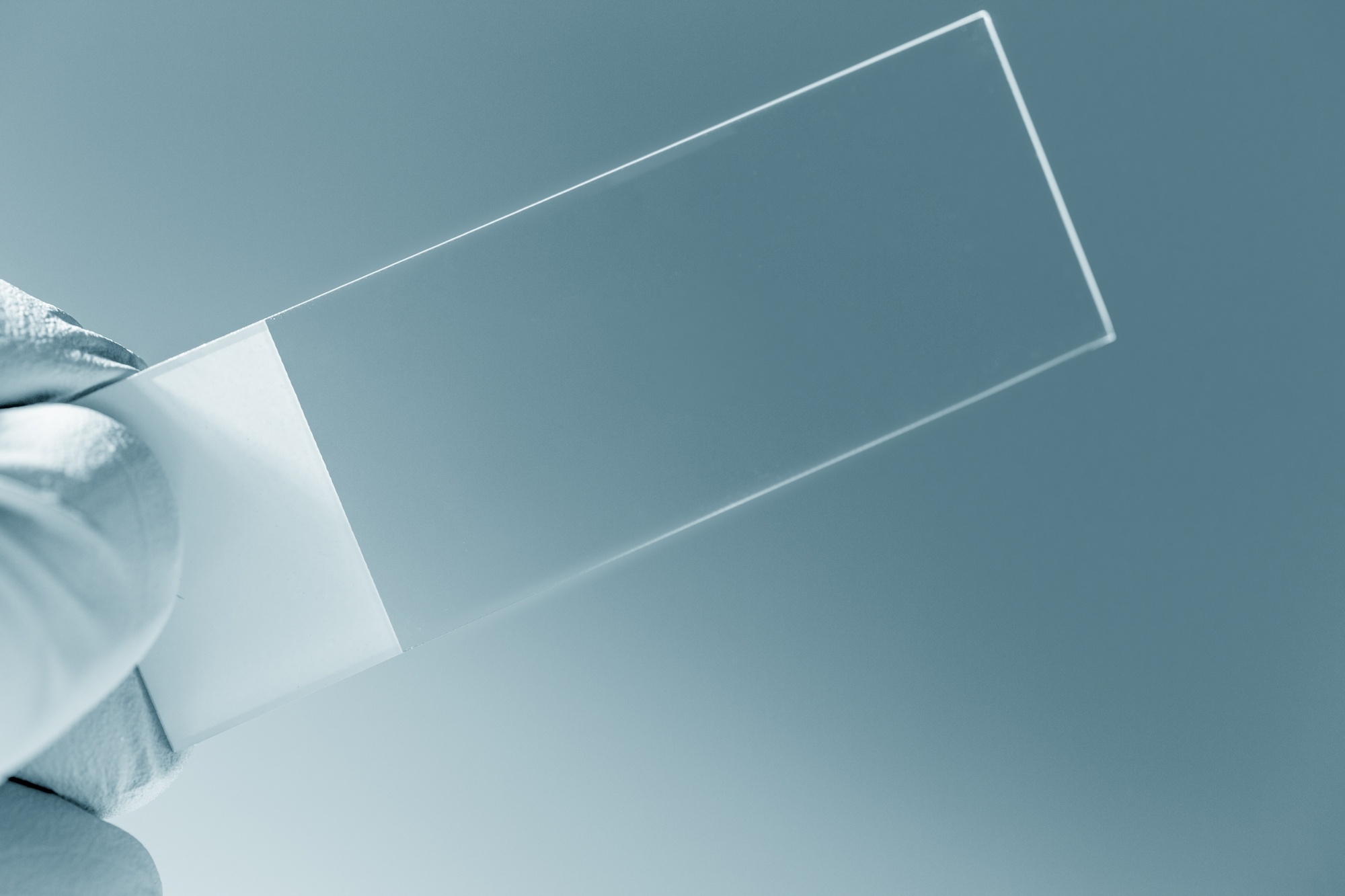The way to get the best microscopy studies is to make sure your subject is fixed in such a way that light goes through it evenly and that significant features in the subject are clearly demarcated.
To get the highest quality slides, you must:
- Choose the highest quality glass for your slides and cover slips.
- Choose the kind of slide that fits your special microscope equipment and the purpose of your examination.
- Use the right kind of slide mount.
- Use an effective mounting medium.
- Choose the right stains to bring out the desired features.
The glass slide:
- The first element in getting the highest quality slides is to choose the best kind of microscope slide glass. Some of the glass used in microscope slides have impurities in them. These contaminants that float in the glass may create patches of false color or fluorescence that can reduce contrast and clarity.
- Microscope slides have to be made of optical quality glass. Some of the best microscope slides are made of soda-lime glass or borosilicate glass. Sometimes special optical quality transparent plastics are used.
- Fused quartz is used instead of glass when fluorescent light is going to be used to illuminate the subject.
- The cover slips used to flatten the specimens or to protect the microscope lens should be made of the highest quality optical glass, as thin as possible to reduce film effects.
Glass slides are often in specialty shapes for different purposes. Concavity slides have shallow well on the upper surface to hold liquids. Graticule slides have measurement grids etched into the surface to aid cell counts or assessing the size of objects. Some slides have special reservoirs and channels cut into them.
The mount:
The word "mount" sometimes sounds a little grandiose. Mounting simply refers to putting the subject on the slide. For at least 200 years the art and science of slide mounting has developed to improve microscopic examination. The way the subject is mounted on the slide often makes the difference between a clear image and one that is muddled and confusing.
- Dry mounting is the simplest kind of mount. It is simply placing the thin, light transmittable subject onto the slide. Usually, a cover slip is placed on top of the subject to keep it flat and to keep the microscope's objective lens from contaminating the subject.
- A wet or temporary mount means that the subject is immersed in water or another liquid on the slide. Wet mounts are usually used when the liquid has something to do with the nature of the subject (for instance to view swimming protozoans). A cover slip is almost always used to flatten the subject and avoid refraction effects from the liquid.
- Most often, pathology studies or biological cell studies use a prepared or permanent mount. These mounting procedures may be the most complicated and highly developed. They involve pre-treating the subject before slicing with the microtome and, most often, the use of a mounting medium and, often, a stain.
The permanent mount:
The permanent mount is the one most often used for animal or human tissue studies. The specimen is treated to remove all water from the cells. A substance that solidifies is used to replace the water. That substance may be paraffin or another water replacement substance. Then, you may use the microtome to slide the specimen to translucency and place it on the slide. A stain may be applied to bring out the outlines of important features. The thin prepared and stained slides of tissue are placed on the slide. A mounting medium may be added. A cover slip will stabilize and protect the slide.
Mounting media:
- The mounting medium can simply be water. Sometimes glycerol (a slightly denser than water substance) is used.
- Permanent mounting more often employs substances specifically designed to thicken and hold specimens in place for a long time, reducing decay and contamination.
- There are a number of popular types of mounting media.
- The mounting medium must not act as a lens because that would add additional light refraction and distortion. The mounting medium must be chosen to have the same refractive index as the specimen. If the two refractive indices are too different, spots where the medium impacts the specimen will show as dark areas that can hide important details.
The stains:
Stains will bond to particular features of cell anatomy and make them more visible to the microscope. There is a large number and variety of stains that have different uses. The quality of your slide will often depend on the appropriate use of stains.
HSRL provides the highest quality slides in the industry. Please contact us to learn more.
